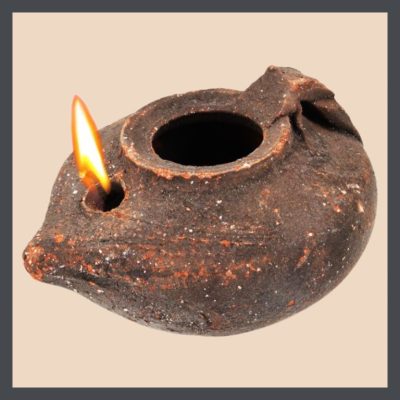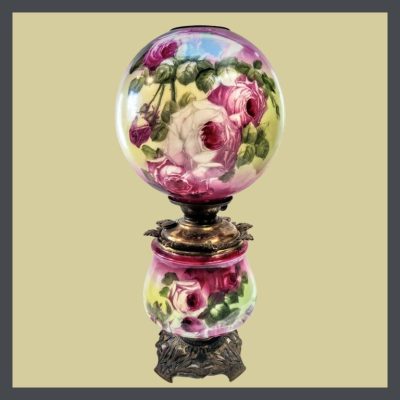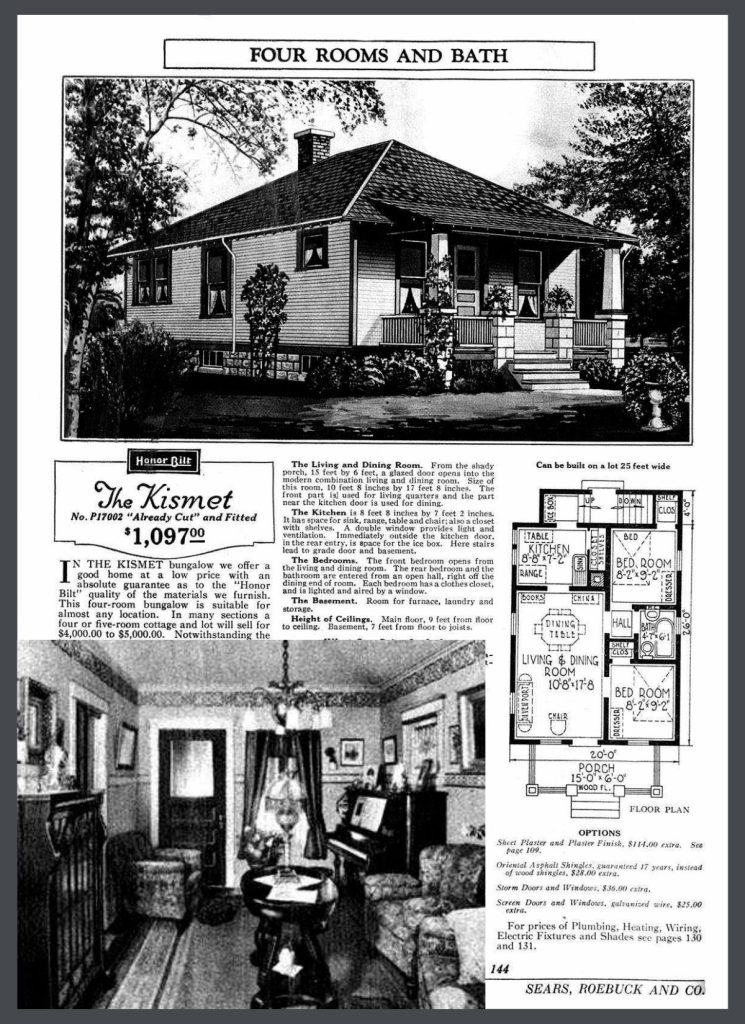OUT OF THE DARKNESS
 The desire for lighting is in our DNA. Our circadian rhythms, our bodies’ clocks, determine the patterns of our bodies, our minds & behavior over a 24 hour cycle & respond to light & dark. Light exposure generates signals from our brains, releasing hormones that keep us awake & perky during the day. Darkness activates sleep hormones.
The desire for lighting is in our DNA. Our circadian rhythms, our bodies’ clocks, determine the patterns of our bodies, our minds & behavior over a 24 hour cycle & respond to light & dark. Light exposure generates signals from our brains, releasing hormones that keep us awake & perky during the day. Darkness activates sleep hormones.
Early man slept when it was dark & trotted about hunting & gathering when it was light. But, as civilization developed, his activities expanded & he wanted to be active after the sun went down. He wanted to be able to see inside his cave.
Almost 130,000 years ago he learned to control fire, which was also handy for warmth & for cooking. It took another 100,000 years for him to make the first lamps, which employed animal fat as fuel. It wasn’t until 4500 B.C. that he invented the oil lamp which uses liquid oil, contained in a vessel, with a textile wick that is dropped in it. The top of the wick is ignited, producing a flame as the oil is drawn up the floating wick.
Following that leap in technology, lamp evolution pretty much stagnated for thousands of years. The American colonists used lamps that weren’t that much different from those used in biblical times- smokey, faint lighting, giving off little more light than candles.
 The kerosene lamp was developed in 1850 & was used until electricity took its place. This type of lamp is still sometimes used in emergencies when electricity fails & light is needed.
The kerosene lamp was developed in 1850 & was used until electricity took its place. This type of lamp is still sometimes used in emergencies when electricity fails & light is needed.
Of course when the Victorians came along, a lamp became a flower garden, though it was still the basic mechanism of wick & oil. By this time we had learned to mold glass & metal so every material was employed in a manner that obscured its basic nature & turned it into something else, to be displayed in a house of like objects, all competing for the title of the most ornate.
I am not going to say that I do not consider this lamp to be lovely. I’m always happy to see a rose, growing in a garden, or painted on a lamp, but, you have to agree that the materials, function & construction of this lamp are not immediately apparent, being buried under excessive ornamentation!
In 1879 Thomas Edison & Joseph Swan patented the carbon-thread incandescent (An incandescent light bulb, incandescent lamp or incandescent light globe is an electric light with a wire filament that is heated until it glows.) lamp & over the next couple decades electricity technology evolved rapidly & took the lead in powering America.
THE LIGHTING OF THE ARTS & CRAFTS MOVEMENT
I think that my favorite William Morris quote is, “We shall not be happy unless we live like good animals, unless we enjoy the exercise of the ordinary functions of life: eating, sleeping, loving, walking, running, swimming, riding, sailing.”
Somehow he strips away all gee-gaws from life which is the basis of the Arts & Crafts Movement. I am amused by fact that the prehistoric, earthen lamp above, so resembles the lamps of the Movement. Personally, I find its humble simplicity beautiful.
I think the best way to talk about the lighting is to talk about the craftspeople of the Movement’s early years. But first, let’s talk about harmony.
HARMONY OF LIGHTING DESIGN
 There’s nothing more beautiful than the fixtures you see in the Gamble House, or the amazing lamps of Stickley & other masters you see in the Museum of the American Arts and Crafts Movement in St. Pete, Florida.
There’s nothing more beautiful than the fixtures you see in the Gamble House, or the amazing lamps of Stickley & other masters you see in the Museum of the American Arts and Crafts Movement in St. Pete, Florida.
Harmony is the visually satisfying effect of combining similar or related elements. In the decorative arts, this means that the lighting that you see in the Gamble House or other ultimate bungalow, in a museum might not be appropriate in your modest home.
Often, the key visual, size is the first aspect to consider. The Gamble House is a whopping 8,100 square feet. The rooms are proportionately sized & the lighting’s dimensions fit the room. While a modest house may have beautiful built-ins of unpainted woodwork, the Gamble House boasts cuts of wood, hand-picked by Charles Greene out of Burma teak, Douglas fir beams, white oak & Port Orford cedar, cut in elaborate designs. The beautiful stained glass of the lightening is duplicated throughout the house & most impressively, in the massive entry.
 This is not meant in any way to denigrate your home. It is merely to state that the look & feel of your house are different from these bunga-mansions (as Jane Powell termed her magnificent house in Oakland) as their decorative elements look no more appropriate in a more simple home than would the crown jewels with your jeans. (And yes, I know that there are those out there who would wear such a combination & 1 in 1,000 of them would pull it off.) There are still some amazing options out there that would enhance your home rather than overwhelming it.
This is not meant in any way to denigrate your home. It is merely to state that the look & feel of your house are different from these bunga-mansions (as Jane Powell termed her magnificent house in Oakland) as their decorative elements look no more appropriate in a more simple home than would the crown jewels with your jeans. (And yes, I know that there are those out there who would wear such a combination & 1 in 1,000 of them would pull it off.) There are still some amazing options out there that would enhance your home rather than overwhelming it.
This little gem from Doc’s Architectural Salvation in Springfield, Tennessee. Complete with beautifully patterned slag glass, it is undisputedly Arts & Crafts & would harmonize with any architecture or decor in a bungalow.
In the same way, the light in your kitchen is not from a Frank Lloyd Wright designed house. A simple schoolhouse light is more appropriate & will set off the other design elements of your kitchen rather than overtaking them.
I’m a big believer in visual flow. Keeping within the period & style of your house will ensure that there won’t be so many focal points that your overall look will be difficult to determine. Ideally each item in the room will complement or complete the others & the focal points will be supported by all the other elements.

THIS IS JUST THE FIRST PART OF AN IN-DEPTH SERIES ON LIGHTING
Read them all!
![]() Part 2, THE CRAFTSMAN MAGAZINE LIGHTING ARTICLE
Part 2, THE CRAFTSMAN MAGAZINE LIGHTING ARTICLE
Tips on utilizing this new technology in the home.
![]() Part 3, THE LIGHTING OF THE A & C ERA
Part 3, THE LIGHTING OF THE A & C ERA
How lighting expresses the philosophy & aesthetic of the Movement.
![]() Part 4, ARTS & CRAFTS LIGHTING DESIGNERS
Part 4, ARTS & CRAFTS LIGHTING DESIGNERS
Taking a look at how this new technology provided a market & how the market was served.
![]() Part 5, WOMEN IN ARTS & CRAFTS LIGHTING
Part 5, WOMEN IN ARTS & CRAFTS LIGHTING
2 women who contributed to the Movement with their beautiful lamps.
![]() Part 6, ANTIQUE ARTS & CRAFTS LIGHTING RESOURCES
Part 6, ANTIQUE ARTS & CRAFTS LIGHTING RESOURCES
If you want something authentic, but not a museum piece.
![]() Part 7, MODERN DAY ARTS & CRAFTS LIGHTING MASTERS
Part 7, MODERN DAY ARTS & CRAFTS LIGHTING MASTERS
Craftsmen honoring the tradition.
![]() Part 8, REPRODUCTION ARTS & CRAFTS RESOURCES
Part 8, REPRODUCTION ARTS & CRAFTS RESOURCES
Another beautiful option.
STAY IN THE BUNGALOW KNOW!!!
Sign up for our newsletter & receive our FREE E-book, 7 VITAL Things to Do Before You Hire a Contractor.




0 Comments